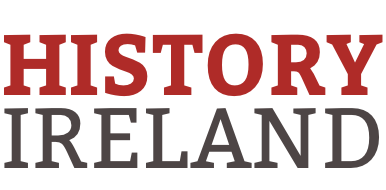BY TONY CANAVAN
Plans for the National Museum of Ireland
Josepha Madigan TD, Minister for Culture, Heritage and the Gaeltacht, recently launched the National Museum of Ireland’s (NMI) €85m, fifteen-year ‘master vision statement’ with extensive plans for the four museums in its charge. The Natural History Museum (a.k.a. the ‘dead zoo’) will be extended, with the reopening of floors previously ‘lost’ to the public. The top two floors, built in 1857 and never refurbished, have been closed to the public since the notorious stairway collapse a decade ago. Outgoing director of the NMI Raghnall Ó Floinn says that the institution holds ‘four million objects, give or take a million, depending on how you count insects and postage stamps’. Most of these are in storage, but that will all change by 2021 under the new extension plans. Once completed, the Natural History Museum will be able to show marine specimens, including hundreds of 1880s Blaschka glass models of sea creatures, and dinosaur remains, including a 7m-long Jurassic sea monster. Part of the plan is to link Natural History on Merrion Street with Archaeology on Kildare Street, either underground or over-ground. After this, Kildare Street will get a make-over to improve its entrance and expand its exhibition space. In the long term, Collins Barracks is to be linked to the Liffey and will get new galleries for earth, science and world cultures. It is envisaged that it will become a hub for all four museums, including the Museum of Country Life at Turlough Park, Co. Mayo.
Was a new plantation the solution to the Irish question?
In 1918, with Ireland in turmoil and the Home Rule settlement in the air, a Church of Ireland rector, Revd R.H.V. Brougham of Passage West, Co. Cork, wrote to the newspapers with an imaginative solution to settle the Irish Question once and for all. The Revd Brougham’s suggestion was to ‘colonise Ireland with English, Scotch and Welsh soldiers’. His advice was to ‘send them not in units or tens, but in thousands and, wherever possible, the married ones with their families in preference to the single’. As the good reverend rightly pointed out, ‘the Plantation of Ulster was the only really successful attempt to colonise Ireland because the colonists brought their wives and families with them’. Revd Brougham recommended this solution, as ‘it would go further towards settling the Irish Question than any amount of tinkering at Home Rule Bills or pampering rebellion’. Oh, what might have been!
Free the ‘Irish Giant’!

Unburying the past
Visitors will soon be able to explore the past of one of Belfast’s most historic cemeteries. A £1.68m project, funded by the UK’s Heritage Lottery Fund, has been launched to make a visitor attraction of the city’s municipal cemetery, which dates back to 1869. Vital restoration work will be done to the cemetery’s infrastructure, including returning its Victorian fountain to its former glory. The graveyard is the last resting place of many key figures in Belfast’s history, from industrialists to pioneers of education. Situated on Belfast’s Falls Road, the ‘city cemetery’ (as locals call it) has long been overshadowed by the nearby Milltown Cemetery, but now this hidden gem of Belfast’s history will have new landscaping, upgraded paths and information panels highlighting its place in the city’s history. Once the restoration work is complete, guided tours of the various graves and tombs will be provided.
